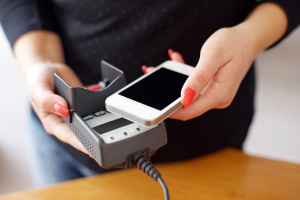Three Things That Cloud-Based Point of Sale Systems Can Deliver That Your Traditional Register Can’t
 The cash register: for a long time, it’s been a staple of the retail industry. Over time, however, many of these point of sales systems for retail stores have grown larger, taking up valuable counter space and sometimes running on obsolete software. And that has negative effects for retail managers, business owners, and others in charge, as many know all too well how difficult it is to retain customers through technical difficulties. Fortunately, there is an answer today: cloud-based POS software and systems that run on familiar Apple operating systems.
The cash register: for a long time, it’s been a staple of the retail industry. Over time, however, many of these point of sales systems for retail stores have grown larger, taking up valuable counter space and sometimes running on obsolete software. And that has negative effects for retail managers, business owners, and others in charge, as many know all too well how difficult it is to retain customers through technical difficulties. Fortunately, there is an answer today: cloud-based POS software and systems that run on familiar Apple operating systems.
When it comes to the point of sales systems for retail stores themselves, it’s worth comparing their capabilities along with their mobility and upgrade protocols. Here are three crucial comparisons you should make when considering the use of a traditional POS system and one that runs on cloud technology:
System
- Traditional: Traditional POS systems tend to run on the Windows operating system, but they may be even older than that and only display text. As a result, these systems may lag considerably and be prone to breakdowns.
- Cloud: Today’s cloud point of sale systems tend to run on Apple OS and iOS for mobile devices in addition to Windows systems. Apple is a popular operating system considered easy to learn by many, and it may provide more security than a Windows-based system, which often has many security vulnerabilities.
- Traditional: Because a traditional POS and its peripherals are often wired to the modem in order to process credit cards, it would not have mobile capabilities. This means that customers can only line up in certain locations, and restaurant owners and workers may only have one station to process customer payments. This has the potential to create long lines and disgruntled customers if there are problems with the system.
- Cloud: A mobile POS system that uses cloud technology will work as long as there is an internet connection available. Additionally, many of these systems are available for the iPad, so there’s no more stationary POS for quick credit card payments. Busy retail establishments can open a checkout line anywhere, diners can pay at their tables, and retail stores can travel to festivals and conventions and offer customers the same convenience of paying with a credit or debit card.
- Traditional: One of the big “catches” with a traditional POS is that it requires business owners to pay for upgrades and licensing each year. Additionally, fees for “maintenance” can cost as much as 18-20% the price of the software. That’s an unnecessary and hidden expense for many business owners.
- Cloud: Because cloud systems are connected to the internet, they receive continuous automatic upgrades all year round, so the software can always stay current. This type of software also tends to be more cost effective for businesses because there are no up-front costs.
Mobile
Upgrades
Purchasing new point of sales systems for retail stores might sound like a daunting task, but it doesn’t have to be. Be prepared to communicate the needs of your business, and you should have no problem upgrading your sales equipment. Have more questions? Leave a comment below.
Comments are closed